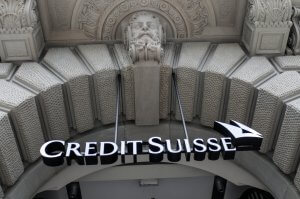- Banking & financial disputes

Longer Reads
Why “coco” bonds may not be as sweet for investors as once thought
Partners Robin Henry and Stephen Rosen highlight the potential risks investors face with “coco” bonds.
2 minute read
Published 9 June 2014
Key information
- Specialisms
- Dispute Resolution
- Services
- Banking & financial disputes
Concerns have been raised about the risks of investing in “coco” bonds (contingent convertible bonds). Many private investors may not have been made fully aware of the serious risks which these types of bonds involve.
Over the last 3 years a new form of financial security has emerged in response to regulators’ demands that banks position themselves to better absorb losses during a crisis (rather than expect the taxpayer to bail them out). Known variously as bail-in bonds, hybrid bonds, wipe-out bonds and contingent convertible bonds, trades in these securities have reached €75 billion on European markets and are predicted to reach €100 billion by the year’s end [1].
As European banks prepare themselves for the impending stress-testing of Basel III, coco bonds have provided a cheap means of improving the banks’ tier one capital ratios. Banks are required to hold a proportion of their risk-weighted assets in the form of tier one capital (comprising common equity and retained earnings) so that losses will fall on shareholders rather than creditors. Coco bonds, costing roughly half the return on equity demanded by shareholders with the benefit of tax-deductible interest, appear to be a win-win for both banks and regulators.
Banks are required to pay coupons on these bonds up until the occurrence of a particular event called a “conversion trigger”. A conversion trigger may be the bank crossing a nominal capital to assets ratio, or a decision by the regulator that the bank is “in trouble”. At this point the bonds will either convert into shares or will simply be written down to zero. Since the losses are borne by investors rather than the taxpayer (as a result of a bail-out), the benefits from regulators’ point of view appear at face value to be clear, but concerns have been raised that in practice, coco bonds might actually worsen a future banking crisis because the effect of a conversion trigger being sprung may add downward pressure to a falling stock price. It is for this reason that coco bonds have been called “death spiral bonds”.
Nonetheless these bonds have proved popular with investors. The coupons on such bonds will, depending on the perceived creditworthiness of the bank, range between 7 to 9, and even up to 10%. There has been a bull-market for these products, to say the least. In late 2012, Barclays issued $3bn of contingent convertible bonds which would wipe out investors if the bank’s core tier one capital ratio fell below the 7 per cent minimum specified by international regulations. Investors were attracted to a well-known name offering a coupon of 7.625 per cent for 10 years and demand was purported to reach $17bn. In January 2014 the French bank Crédit Agricole received $25bn of orders for its $1.75bn issue of coco bonds paying a coupon of 7.8 per cent. In March this year Spain’s Santander and Denmark’s Danske Bank joined the ranks of Barclays, Credit Suisse and UBS by offering coco bonds in what has so far been an almost entirely European phenomenon. Bank of America Merill Lynch has recently initiated its first coco bond index, signalling that the market is entering the mainstream.
There are, however, serious risks for the investors. In good times, the bonds act in the same way as normal high yield bonds. However, the higher coupons payable may not be sufficient recompense if the trigger event occurs, particularly as a result of a regulator taking a unilateral decision to warn of problems for the issuing bank. In August 2013 John Dizard, writing in the Financial Times, described coco bonds as“financial perpetual motion machines”, with more than a nod towards the famous fraudulent invention of John W Keely[2]. Since then, in February 2014, Standard & Poor signalled an intention to downgrade the security rating of coco bonds stating that, “We are signalling potential downgrades (by at least one notch) of securities that banks have been issuing in record numbers to meet new regulatory requirements.” An employee at S&P was quoted as saying “There is a greater risk of a regulator requiring a bank to withhold the coupon long before it hits the trigger for converting into equity or being written down.” [3]
Following a trigger event, investors may find themselves either ranking equally with shareholders or even subordinated to them. Since it is estimated that a fifth of coco bondholders are private investors, the concern is that they may not have appreciated the risks involved. Calls are now being made to tighten the regulation of coco bonds to make their risks clearer to investors.
For more information, visit our Financial Services sector page.
Sources:
[1] Financial Times 7 May 2014 “Regulators must act on coco b ond risks” by Alberto Gallo
[2] Financial Times 16 August 2013 “Cocos: Ingenuity that’s proving too good to b e true” by John Dizard
[3] Financial Times 28 August 2013 “‘Sudden death’ b ank b onds on the increase” by Christopher Thompson and Tracy Alloway
Related content
Longer Reads
Why “coco” bonds may not be as sweet for investors as once thought
Partners Robin Henry and Stephen Rosen highlight the potential risks investors face with “coco” bonds.
Published 9 June 2014
Associated sectors / services
Authors
Concerns have been raised about the risks of investing in “coco” bonds (contingent convertible bonds). Many private investors may not have been made fully aware of the serious risks which these types of bonds involve.
Over the last 3 years a new form of financial security has emerged in response to regulators’ demands that banks position themselves to better absorb losses during a crisis (rather than expect the taxpayer to bail them out). Known variously as bail-in bonds, hybrid bonds, wipe-out bonds and contingent convertible bonds, trades in these securities have reached €75 billion on European markets and are predicted to reach €100 billion by the year’s end [1].
As European banks prepare themselves for the impending stress-testing of Basel III, coco bonds have provided a cheap means of improving the banks’ tier one capital ratios. Banks are required to hold a proportion of their risk-weighted assets in the form of tier one capital (comprising common equity and retained earnings) so that losses will fall on shareholders rather than creditors. Coco bonds, costing roughly half the return on equity demanded by shareholders with the benefit of tax-deductible interest, appear to be a win-win for both banks and regulators.
Banks are required to pay coupons on these bonds up until the occurrence of a particular event called a “conversion trigger”. A conversion trigger may be the bank crossing a nominal capital to assets ratio, or a decision by the regulator that the bank is “in trouble”. At this point the bonds will either convert into shares or will simply be written down to zero. Since the losses are borne by investors rather than the taxpayer (as a result of a bail-out), the benefits from regulators’ point of view appear at face value to be clear, but concerns have been raised that in practice, coco bonds might actually worsen a future banking crisis because the effect of a conversion trigger being sprung may add downward pressure to a falling stock price. It is for this reason that coco bonds have been called “death spiral bonds”.
Nonetheless these bonds have proved popular with investors. The coupons on such bonds will, depending on the perceived creditworthiness of the bank, range between 7 to 9, and even up to 10%. There has been a bull-market for these products, to say the least. In late 2012, Barclays issued $3bn of contingent convertible bonds which would wipe out investors if the bank’s core tier one capital ratio fell below the 7 per cent minimum specified by international regulations. Investors were attracted to a well-known name offering a coupon of 7.625 per cent for 10 years and demand was purported to reach $17bn. In January 2014 the French bank Crédit Agricole received $25bn of orders for its $1.75bn issue of coco bonds paying a coupon of 7.8 per cent. In March this year Spain’s Santander and Denmark’s Danske Bank joined the ranks of Barclays, Credit Suisse and UBS by offering coco bonds in what has so far been an almost entirely European phenomenon. Bank of America Merill Lynch has recently initiated its first coco bond index, signalling that the market is entering the mainstream.
There are, however, serious risks for the investors. In good times, the bonds act in the same way as normal high yield bonds. However, the higher coupons payable may not be sufficient recompense if the trigger event occurs, particularly as a result of a regulator taking a unilateral decision to warn of problems for the issuing bank. In August 2013 John Dizard, writing in the Financial Times, described coco bonds as“financial perpetual motion machines”, with more than a nod towards the famous fraudulent invention of John W Keely[2]. Since then, in February 2014, Standard & Poor signalled an intention to downgrade the security rating of coco bonds stating that, “We are signalling potential downgrades (by at least one notch) of securities that banks have been issuing in record numbers to meet new regulatory requirements.” An employee at S&P was quoted as saying “There is a greater risk of a regulator requiring a bank to withhold the coupon long before it hits the trigger for converting into equity or being written down.” [3]
Following a trigger event, investors may find themselves either ranking equally with shareholders or even subordinated to them. Since it is estimated that a fifth of coco bondholders are private investors, the concern is that they may not have appreciated the risks involved. Calls are now being made to tighten the regulation of coco bonds to make their risks clearer to investors.
For more information, visit our Financial Services sector page.
Sources:
[1] Financial Times 7 May 2014 “Regulators must act on coco b ond risks” by Alberto Gallo
[2] Financial Times 16 August 2013 “Cocos: Ingenuity that’s proving too good to b e true” by John Dizard
[3] Financial Times 28 August 2013 “‘Sudden death’ b ank b onds on the increase” by Christopher Thompson and Tracy Alloway
Associated sectors / services
- Banking & financial disputes
Authors
Need some more information? Make an enquiry below.
Subscribe
Please add your details and your areas of interest below
Article contributors
Robin
HenryPartner - Head of Dispute Resolution Services
Specialising in Banking & financial disputes, Commercial disputes, Corporate recovery, restructuring & insolvency, Financial regulatory, Financial Services and Personal insolvencyStephen
RosenPartner
Specialising in Banking & financial disputes, Commercial arbitration, Commercial disputes, Financial Services and Manufacturing
Enjoy reading our articles? why not subscribe to notifications so you’ll never miss one?
Subscribe to our articlesMessage us on WhatsApp (calling not available)
Please note that Collyer Bristow provides this service during office hours for general information and enquiries only and that no legal or other professional advice will be provided over the WhatsApp platform. Please also note that if you choose to use this platform your personal data is likely to be processed outside the UK and EEA, including in the US. Appropriate legal or other professional opinion should be taken before taking or omitting to take any action in respect of any specific problem. Collyer Bristow LLP accepts no liability for any loss or damage which may arise from reliance on information provided. All information will be deleted immediately upon completion of a conversation.
Close










































































